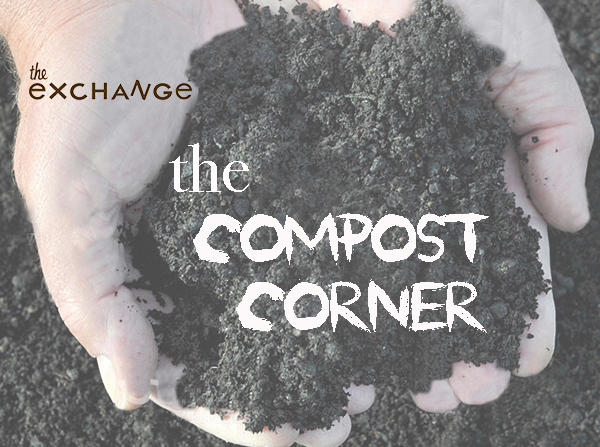A (not so short) History of Compost
Prehistoric farmers discovered that manure from their domesticated animals – mixed with straw and other brush and crop residues – would gradually change into a fertile soil-like material that was good for crops. The practice of “composting” was known to Greeks and Romans and throughout the mid- eastern tribes in the Bible.
Our word “compost” comes from Old French in a variety of spellings: compass, compess, compast and composture
Composting remained integral to farming until the early 20th century. Following WWII, various synthetic fertilizers, herbicides and pesticides were developed by utilizing surplus airplane fuel and other synthetic residues left over from the war. At the time, it was thought that creating these synthetic nutrients for soil could help solve world hunger. By the late part of the 1900’s however, scientific research proved that regular use of these fertilizers did not improve the structure of the soil, but, in fact, gradually harmed it. In addition, synthetic fertilizers are made from non-renewable resources and are expensive, which proved difficult for farmers in less developed countries.
It was in such an underdeveloped country—India—that modern composting got its start. Between 1905 and 1935, Sir Albert Howard, a government agronomist, developed the “Indore method”, named after a city in southern India. This method of composting was made by creating layers of a variety of natural materials – in a sandwich fashion – approximately 1 cubic yard- which is then turned (or mixed by earthworms) during decomposition. Composting has been the basis of organic gardening and farming ever since.
During this same time frame (1924) Austrian philosopher, Rudolph Steiner, outlined the principals of biodynamic agriculture emphasizing composting as a central practice. For biodynamic farmers and gardeners, compost making uses specific preparations, to inoculate and stimulate the activity of beneficial organisms into compost.
In 1942, J. I. Rodale, pioneer of the organic method in America, assimilated the ideas of Howard and added his own experience and knowledge. Larger, longer and taller piles were created and turned only 2X in 12 weeks. Early “wind row” composting soon began. His legacy, the Rodale Institute, continued the work and in 1986 published an early white paper detailing the benefits of composting in CO2 sequestration. These continued practices and experimentation have led the way in the development, understanding of and practical applications for building soil – today’s Regenerative Agriculture movement.

